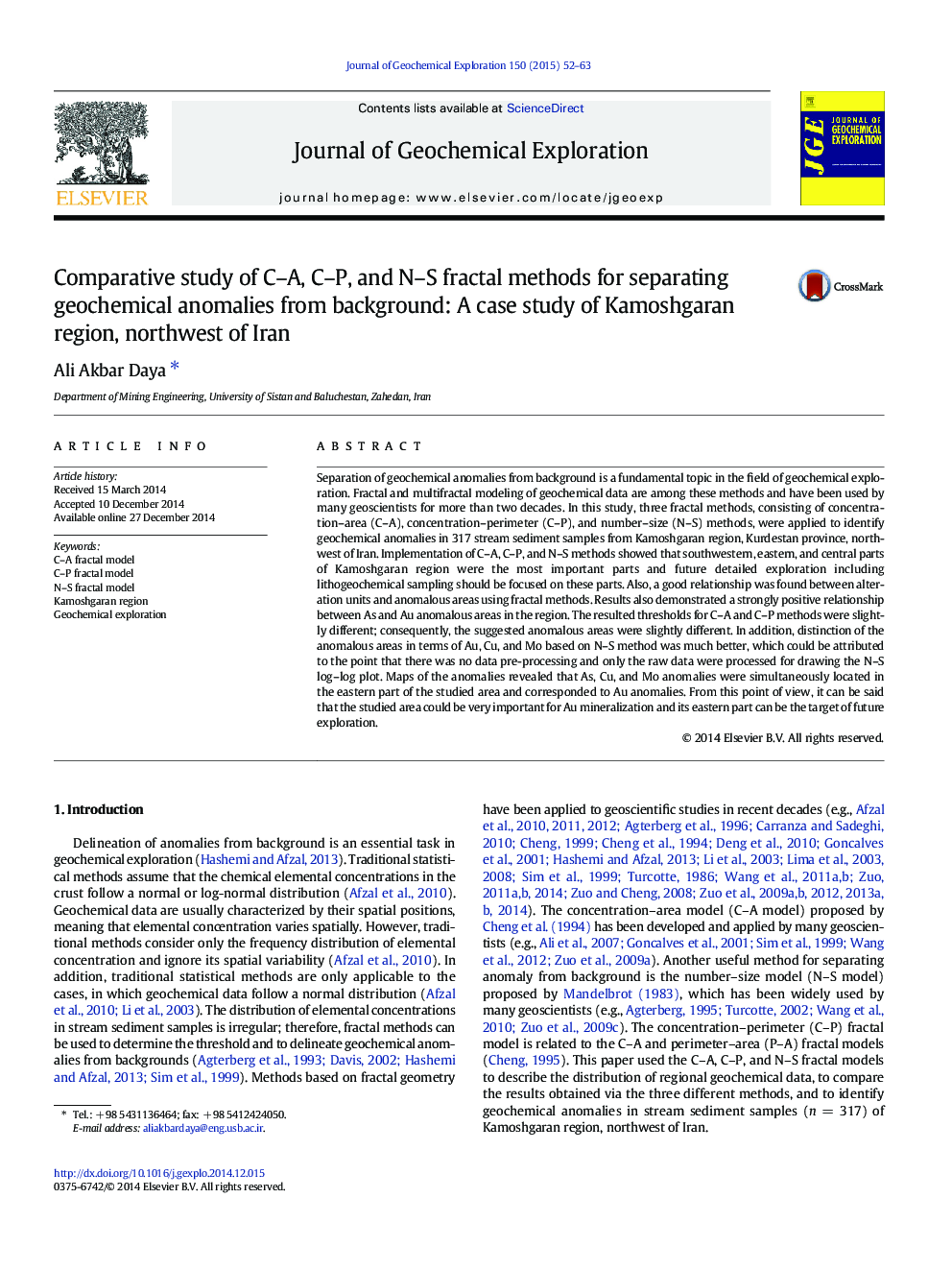| کد مقاله | کد نشریه | سال انتشار | مقاله انگلیسی | نسخه تمام متن |
|---|---|---|---|---|
| 4457176 | 1620909 | 2015 | 12 صفحه PDF | دانلود رایگان |

• I use C–A, C–P and N–S methods for separating anomaly from background.
• I compare and investigate the results of above methods.
• C–A, C–P and N–S are practical methods for geochemical exploration.
• I correlate the suggested anomaly areas with geological aspects.
• Eastern part can be the target for future exploration.
Separation of geochemical anomalies from background is a fundamental topic in the field of geochemical exploration. Fractal and multifractal modeling of geochemical data are among these methods and have been used by many geoscientists for more than two decades. In this study, three fractal methods, consisting of concentration–area (C–A), concentration–perimeter (C–P), and number–size (N–S) methods, were applied to identify geochemical anomalies in 317 stream sediment samples from Kamoshgaran region, Kurdestan province, northwest of Iran. Implementation of C–A, C–P, and N–S methods showed that southwestern, eastern, and central parts of Kamoshgaran region were the most important parts and future detailed exploration including lithogeochemical sampling should be focused on these parts. Also, a good relationship was found between alteration units and anomalous areas using fractal methods. Results also demonstrated a strongly positive relationship between As and Au anomalous areas in the region. The resulted thresholds for C–A and C–P methods were slightly different; consequently, the suggested anomalous areas were slightly different. In addition, distinction of the anomalous areas in terms of Au, Cu, and Mo based on N–S method was much better, which could be attributed to the point that there was no data pre-processing and only the raw data were processed for drawing the N–S log–log plot. Maps of the anomalies revealed that As, Cu, and Mo anomalies were simultaneously located in the eastern part of the studied area and corresponded to Au anomalies. From this point of view, it can be said that the studied area could be very important for Au mineralization and its eastern part can be the target of future exploration.
Journal: Journal of Geochemical Exploration - Volume 150, March 2015, Pages 52–63